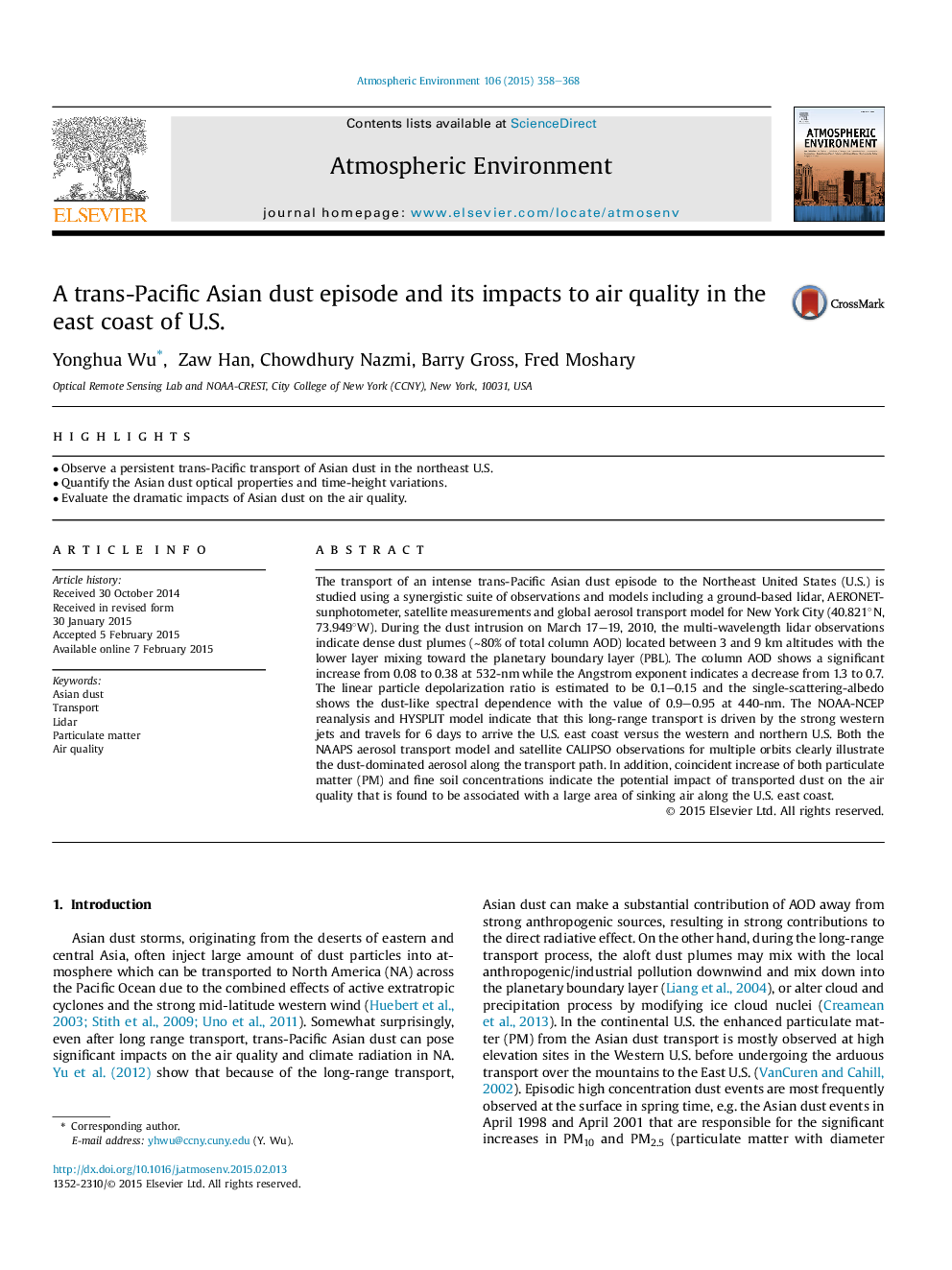| Article ID | Journal | Published Year | Pages | File Type |
|---|---|---|---|---|
| 6338318 | Atmospheric Environment | 2015 | 11 Pages |
Abstract
The transport of an intense trans-Pacific Asian dust episode to the Northeast United States (U.S.) is studied using a synergistic suite of observations and models including a ground-based lidar, AERONET-sunphotometer, satellite measurements and global aerosol transport model for New York City (40.821°N, 73.949°W). During the dust intrusion on March 17-19, 2010, the multi-wavelength lidar observations indicate dense dust plumes (â¼80% of total column AOD) located between 3 and 9 km altitudes with the lower layer mixing toward the planetary boundary layer (PBL). The column AOD shows a significant increase from 0.08 to 0.38 at 532-nm while the Angstrom exponent indicates a decrease from 1.3 to 0.7. The linear particle depolarization ratio is estimated to be 0.1-0.15 and the single-scattering-albedo shows the dust-like spectral dependence with the value of 0.9-0.95 at 440-nm. The NOAA-NCEP reanalysis and HYSPLIT model indicate that this long-range transport is driven by the strong western jets and travels for 6 days to arrive the U.S. east coast versus the western and northern U.S. Both the NAAPS aerosol transport model and satellite CALIPSO observations for multiple orbits clearly illustrate the dust-dominated aerosol along the transport path. In addition, coincident increase of both particulate matter (PM) and fine soil concentrations indicate the potential impact of transported dust on the air quality that is found to be associated with a large area of sinking air along the U.S. east coast.
Related Topics
Physical Sciences and Engineering
Earth and Planetary Sciences
Atmospheric Science
Authors
Yonghua Wu, Zaw Han, Chowdhury Nazmi, Barry Gross, Fred Moshary,
